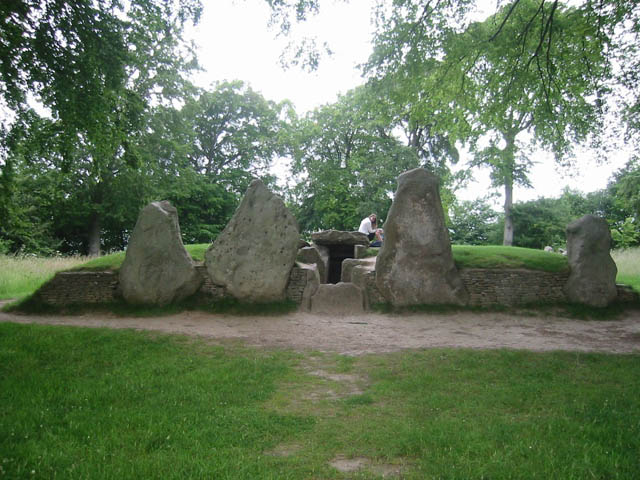Post by brillbilly on Oct 30, 2009 3:12:50 GMT 10
Where it's at

Scattered around the town of Carnac on the south coast of Brittany are hundreds of stones dating back further than Knossus, the Pyramids, Stonehenge or the Egyptian temples of the same name at Karnak, that constitute Carnac as Europe's most important prehistoric site. Nothing can quite prepare you for the feeling of mysticism that surrounds some of the more impressive formations - there used to be a lot of people holding their hands over rocks to tap into their 'energy' but that's long gone with the burgeoning fame of the area.
History of megaliths
There are 10,000 or so standing stones around Carnac, estimated by one researcher to have taken between 500,000 and one million days to erect - all by an ancient culture that arose during the Neolithic period between 4500 and 2000 BC and based its livelihood on agriculture and herding. They left behind several types of megaliths (the word comes from the Greek for big (megas) stones (lithos) as their enduring legacy: menhirs - stones between 3ft and 70ft high, weighing up to 200 tonnes and planted upright; dolmens (dol means table) stone burial chambers either standing alone or accessible through a narrow passage and tumuli; earth mounds covered in dolmens. Some are engraved with popular motifs of axes and horns. The most famous are the four great alignments of menhirs: Le Ménec, Kermario, Kerlescan and Le Petit Ménec.
Myth and mysteries
Local legend says that Carnac's standing stones are Roman soldiers turned to stone by Pope Cornelius. Some nineteenth century writers speculated that it's linked to the mythical civilisation of Atlantis and its people of gigantic stature. The theory that best stands up to mathematical investigation is that the nearby menhir of Locmariaquer and the Carnac stones were an observatory for the motions of the stars - like a three dimensional graph. Solitary rocks have been interpreted as anything from phallic symbols to indicators of burial sites nearby. Although it may prove impossible to discover the true meaning of the stones because so many have been moved or used as ready-quarried stone, research is coming on at such a pace that the local museum quite often finds itself out of date!

Scattered around the town of Carnac on the south coast of Brittany are hundreds of stones dating back further than Knossus, the Pyramids, Stonehenge or the Egyptian temples of the same name at Karnak, that constitute Carnac as Europe's most important prehistoric site. Nothing can quite prepare you for the feeling of mysticism that surrounds some of the more impressive formations - there used to be a lot of people holding their hands over rocks to tap into their 'energy' but that's long gone with the burgeoning fame of the area.
History of megaliths
There are 10,000 or so standing stones around Carnac, estimated by one researcher to have taken between 500,000 and one million days to erect - all by an ancient culture that arose during the Neolithic period between 4500 and 2000 BC and based its livelihood on agriculture and herding. They left behind several types of megaliths (the word comes from the Greek for big (megas) stones (lithos) as their enduring legacy: menhirs - stones between 3ft and 70ft high, weighing up to 200 tonnes and planted upright; dolmens (dol means table) stone burial chambers either standing alone or accessible through a narrow passage and tumuli; earth mounds covered in dolmens. Some are engraved with popular motifs of axes and horns. The most famous are the four great alignments of menhirs: Le Ménec, Kermario, Kerlescan and Le Petit Ménec.
Myth and mysteries
Local legend says that Carnac's standing stones are Roman soldiers turned to stone by Pope Cornelius. Some nineteenth century writers speculated that it's linked to the mythical civilisation of Atlantis and its people of gigantic stature. The theory that best stands up to mathematical investigation is that the nearby menhir of Locmariaquer and the Carnac stones were an observatory for the motions of the stars - like a three dimensional graph. Solitary rocks have been interpreted as anything from phallic symbols to indicators of burial sites nearby. Although it may prove impossible to discover the true meaning of the stones because so many have been moved or used as ready-quarried stone, research is coming on at such a pace that the local museum quite often finds itself out of date!













 Happy New Years Everybody!!!
Happy New Years Everybody!!!
